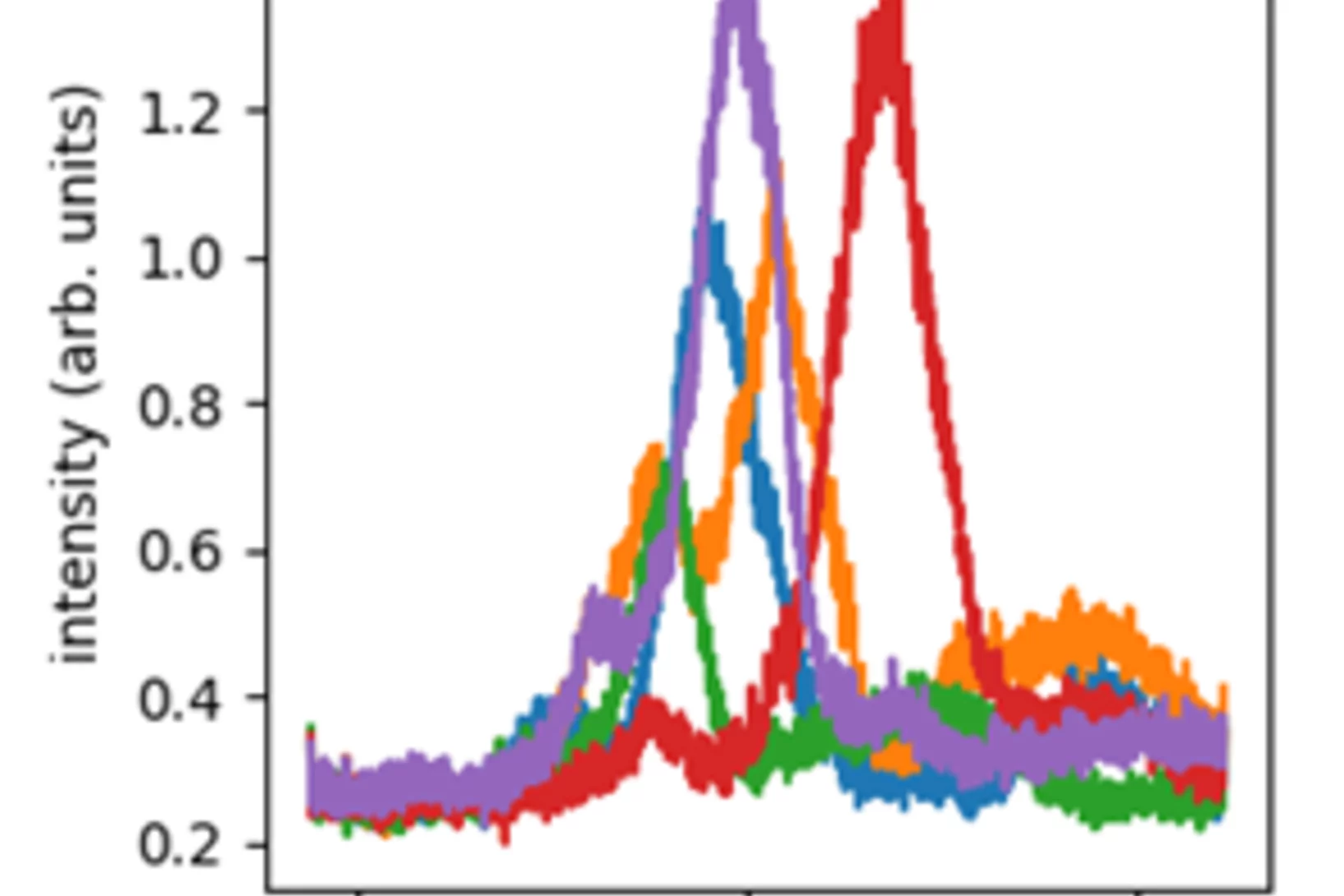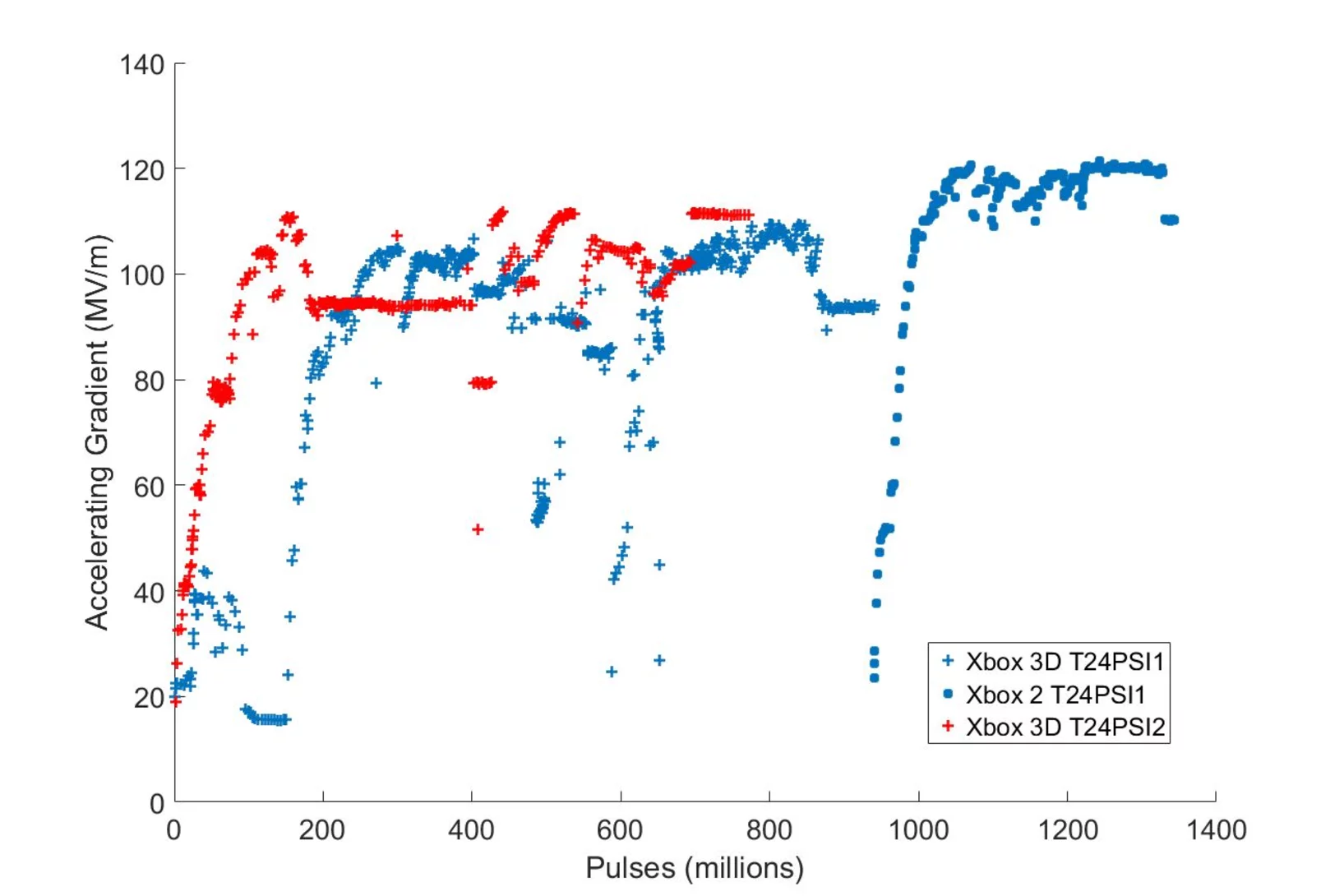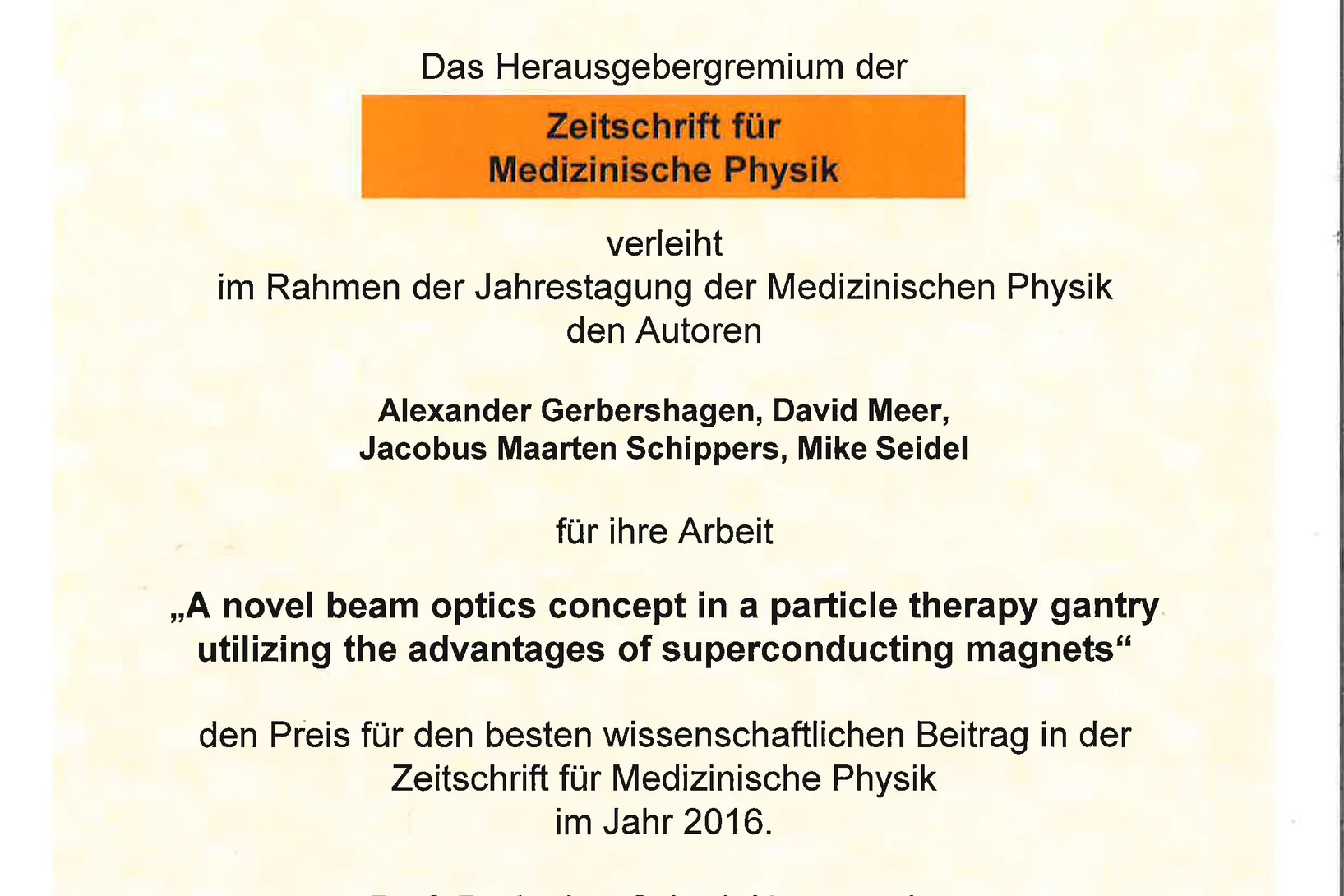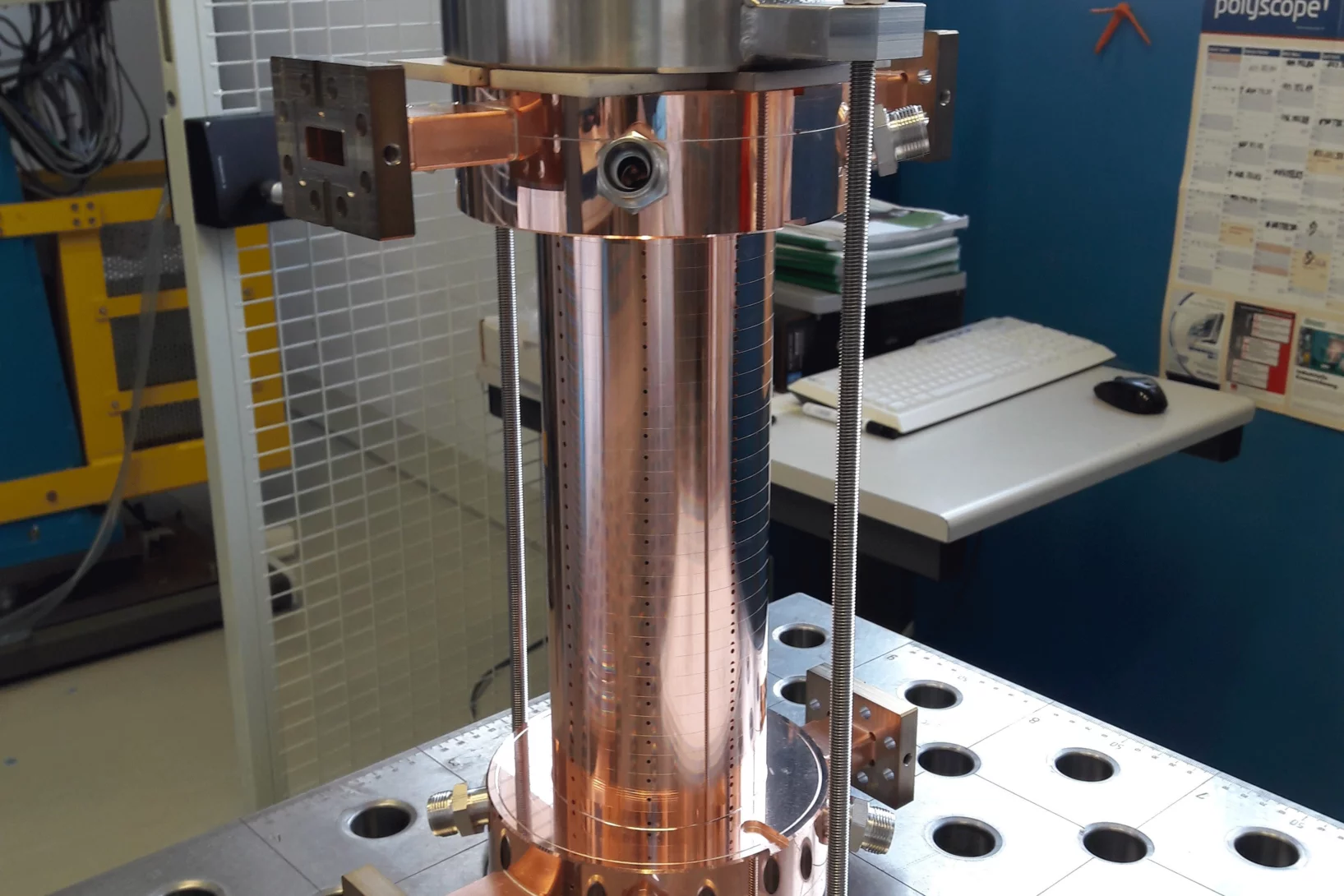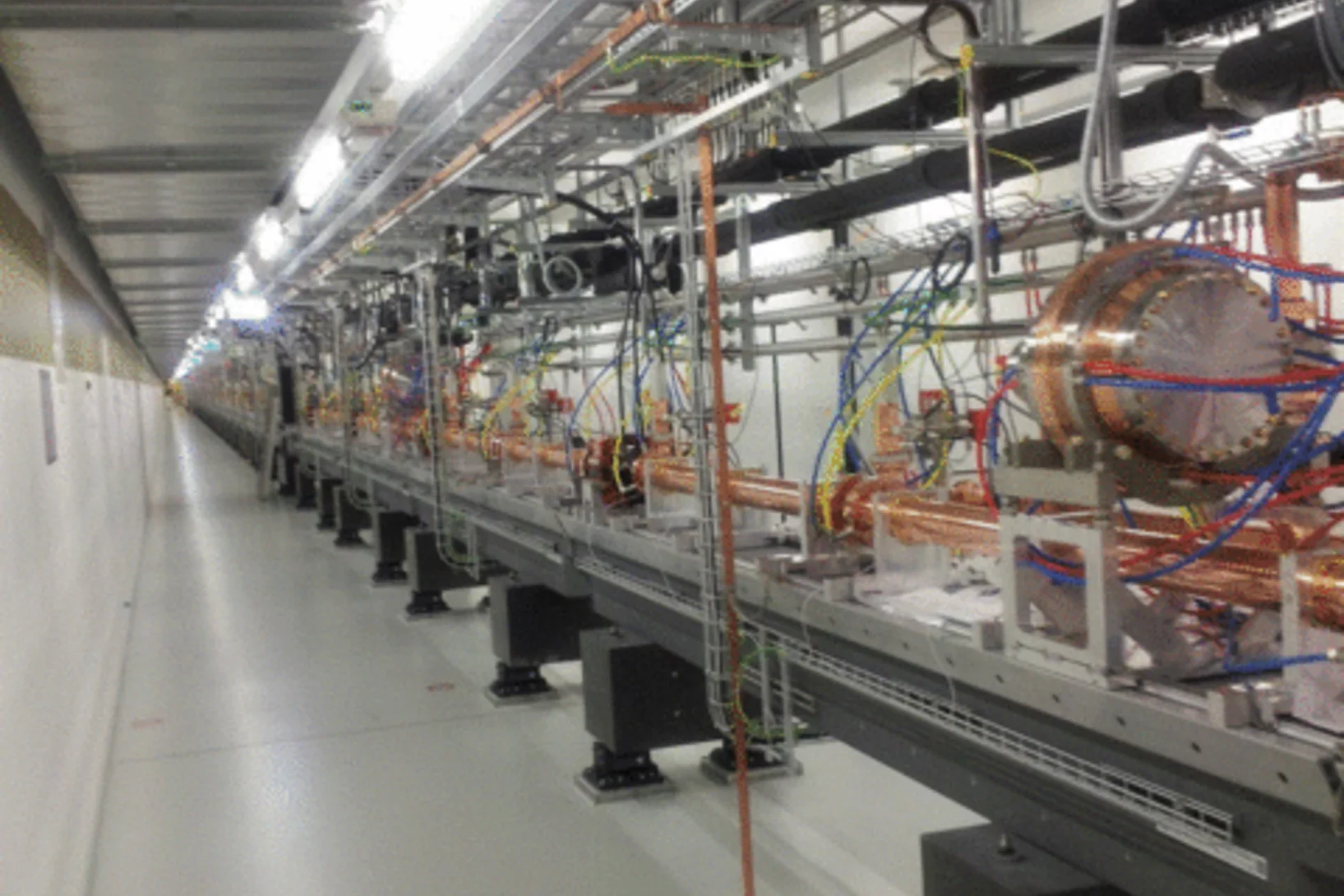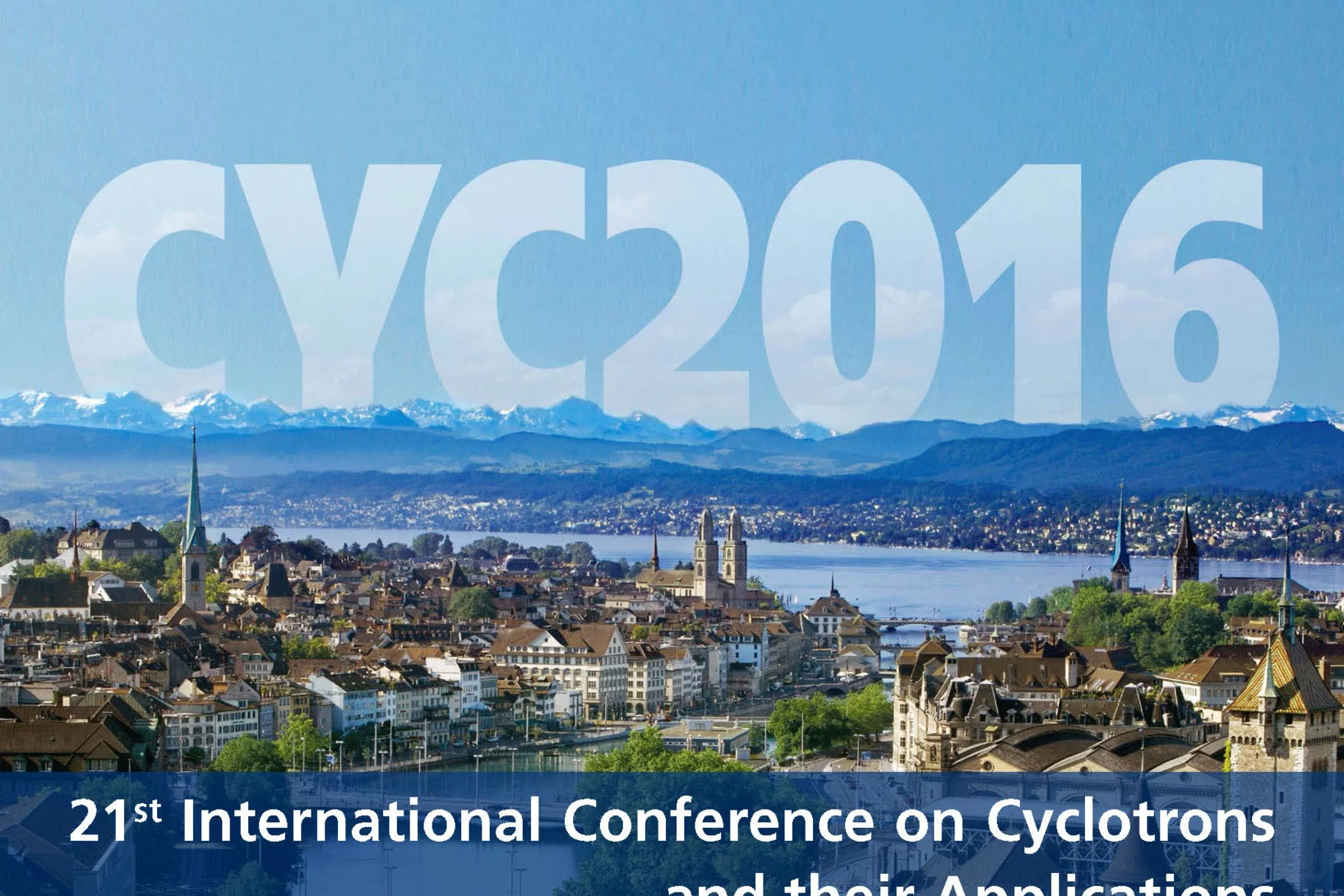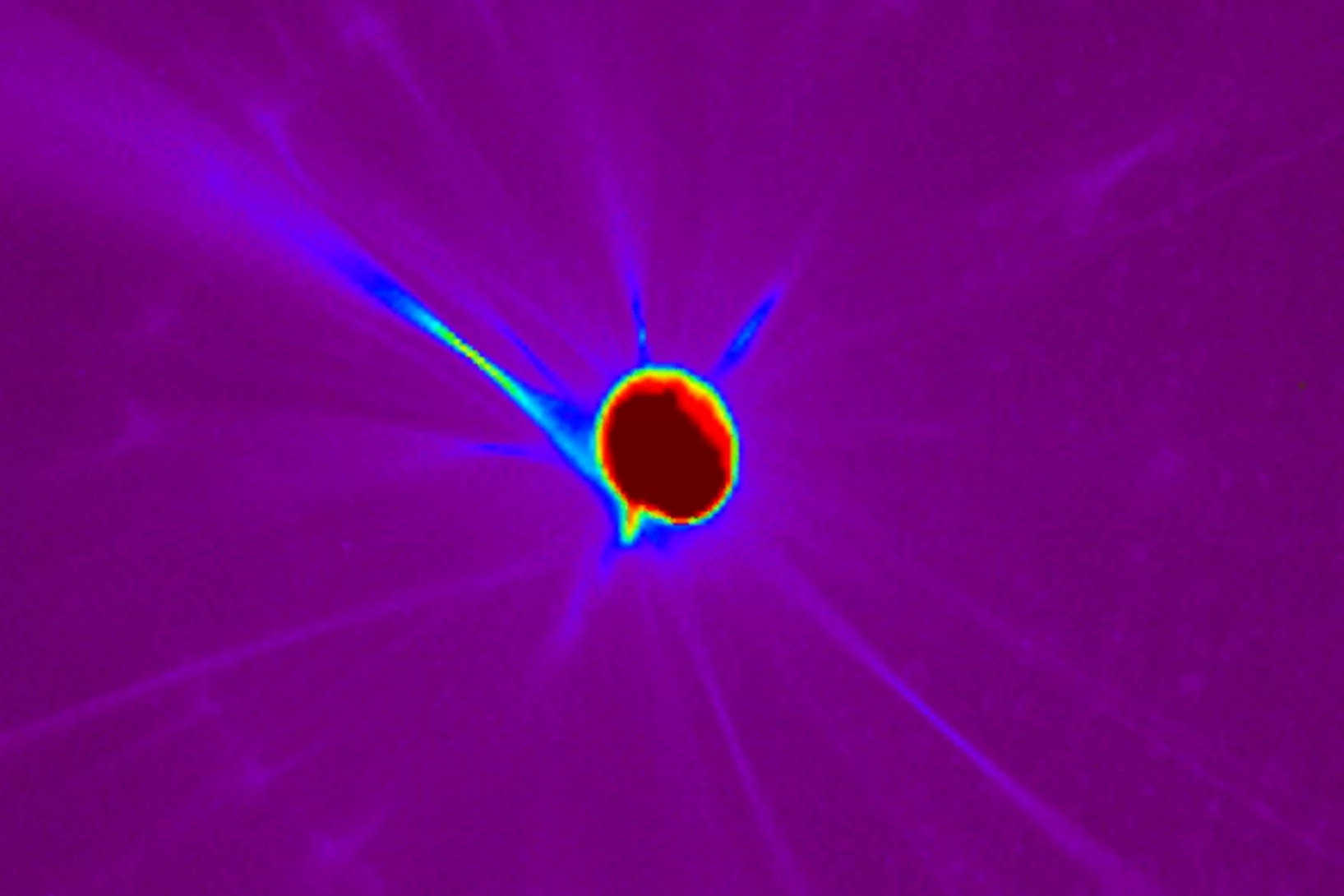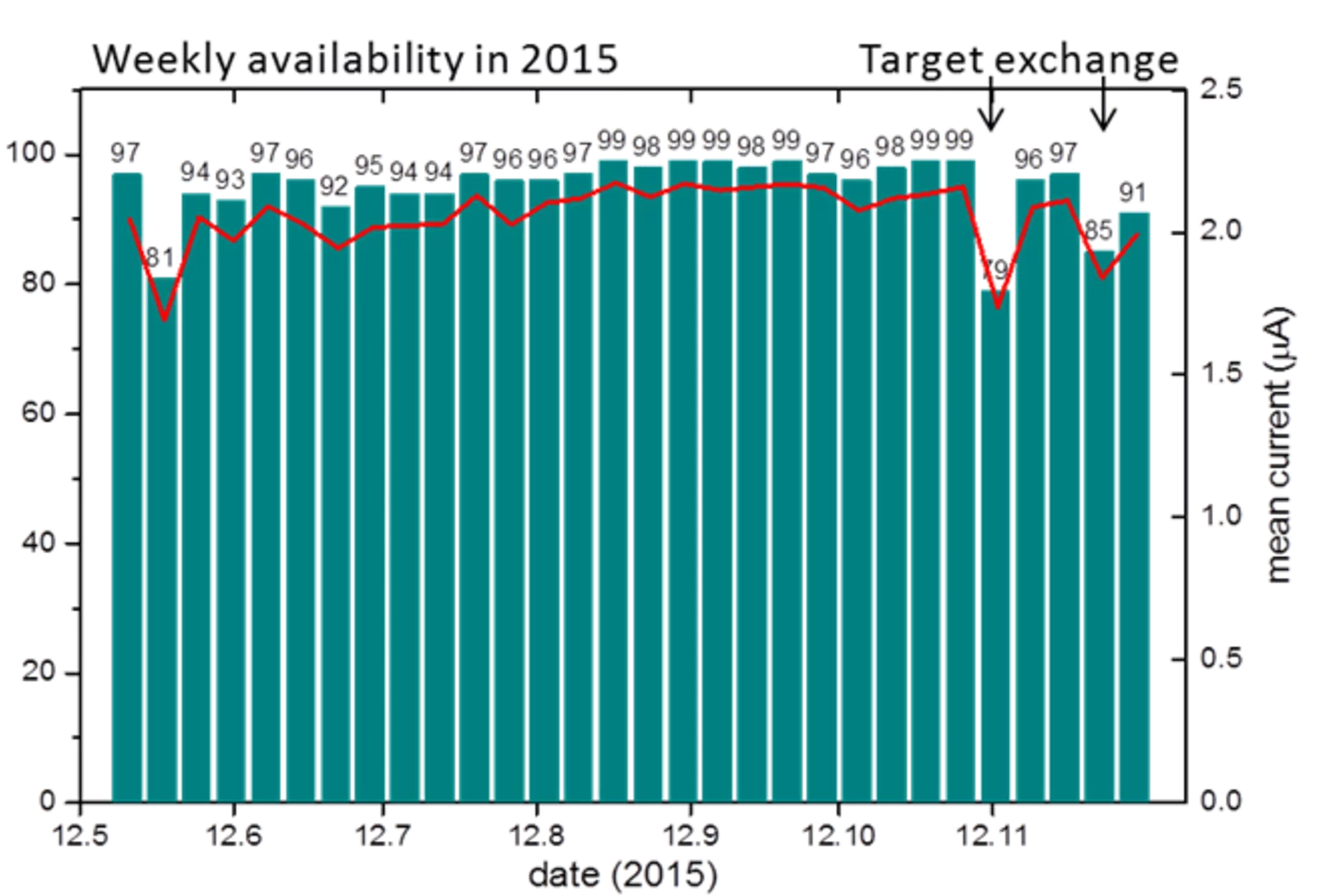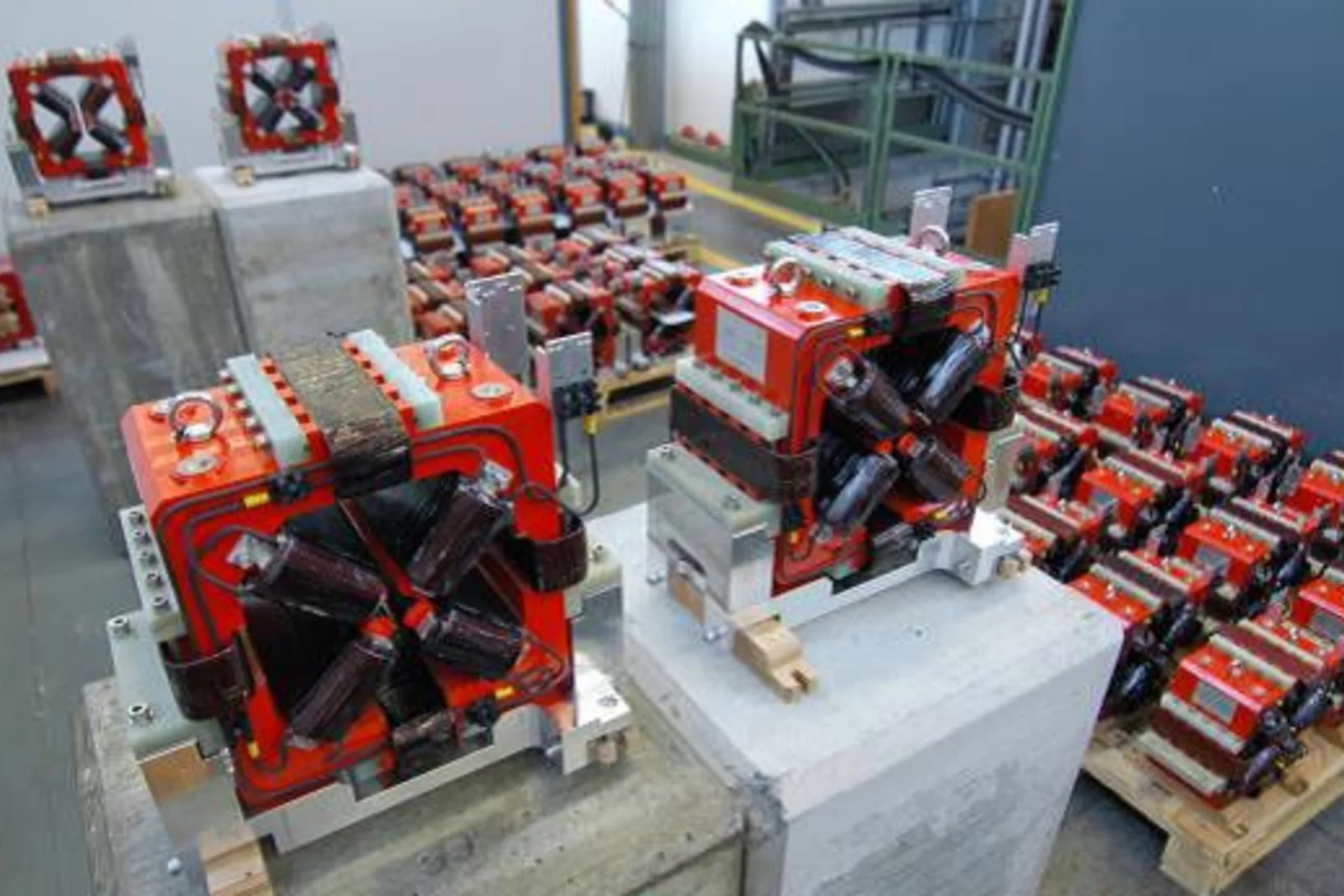Scientific Highlights from the Division Large Research Facilities
(GFA)
Scientific Highlights
First Demonstration of Sub-femtosecond X-ray Pulses at SwissFEL
We have produced ultra-short X-ray FEL pulses at SwissFEL by strongly compressing low-charge electron beams. Single-shot spectral measurements with only a single mode (see the figure below) indicate a pulse duration well below one femtosecond (detailed analysis on the exact pulse duration is ongoing).
Outstanding high gradient performances of two test structures produced at PSI for the CLIC project
X-band (12 GHz) radio-frequency (RF) accelerating structures are under consideration for future free electron lasers, medical linacs and linear colliders. Two such structures, built by PSI in the framework of a CERN/PSI collaboration, are currently being tested at high power at CERN.
Best publication
A team of GFA and CPT physicists has worked out a novel achromatic beam optics concept for a proton therapy gantry. The article on the concept in the journal Zeitschrift für Medizinische Physik has been awarded a prize for the best publication in 2016. The jury states: „The paper of Alexander Gerbershagen et al. entitled „A novel beam optics concept in a particle therapy gantry utilizing the advantages of superconducting magnets” describes a new concept of a first order design of the beam optics of a superconducting proton therapy gantry beam. The jury was impressed by the well-structured experimental work with clear improvement of large momentum acceptance in the gantry which opens the possibility of implementation new and faster dose application techniques in proton therapy.”
X-band prototype structure
Radio-frequency structures at X-band frequencies (~ 12 GHZ) are being considered for applications in compact Free Electron Lasers, medical linacs, a future linear collider (CLIC project) and as a diagnostic for measuring ultra-short (femtosecond) electron pulses in FELs. A first prototype of such a structure has been built at PSI employing the realization procedures that have been developed for the C-Band (6 GHz) structures of the SwissFEL linac.
First acceleration with the SwissFEL C-band module
On Thursday 08/09/2016, the first C-band module boosted an electron beam from 150MeV to 390 MeV. This is the first beam acceleration test of a C-band module in PSI and is an important milestone for the project, since the main accelerator consists of 26 C-band modules of the same kind.
21st International Conference on Cyclotrons and their Applications
The 21st conference in this series takes place from September 12 to 16, 2016 at the Federal Institute of Technology in Zürich. The cyclotron is a simple and efficient particle accelerator and its invention for the purpose of performing fundamental research dates back to 1929. Ernest Lawrence received the Nobel Prize for his idea in 1939. Today cyclotrons are used in a broad range of applications from large and complex facilities for basic research to highly optimized and cost effective solutions for industrial and medical applications. The series of cyclotron conferences provides a forum for the world leading experts to meet and to discuss technological and physics advancements in the field.
First Electron Beam in the SwissFEL Facility
On August, 24th 2016, the electron gun accelerated the first photo-electrons in SwissFEL up to the energy of 7 MeV, initiating the beam commissioning phase of the new SwissFEL facility. After several days of RF conditioning, the gun reached the nominal acceleration gradient of 100MV/m at an input power of 17MW with a pulse-width of 1 micro second at an operating frequency of at 2998.8 MHz.
Proton Accelerator Operation Statistics 2015
For the first time in the history of the High Intensity Proton Accelerator the availability of the facility reached an outstanding value of 95% in 2015 with a record value of 99.3% in week 44. In comparison to the two previous years this corresponds to a reduction of the downtime by 50%. The user operation in 2015 was started as scheduled and already in the first week the machine was available 97% of the scheduled beam time. In addition to the smooth operation of the facility, high intensity beam experiments could regularly be performed with currents of up to 2.4 mA. nu
GFA delivers the SwissFEL magnets on schedule
The Paul Scherrer Institut is building an X-ray free electron laser (SwissFEL) providing a source of intense, ultra-short pulses of coherent radiation in the wavelength range of 0.1 nm to 0.7nm. For the hard X-ray beam line, the magnet section in GFA/ATK has the responsibility for the design, the procurement and the magnetic qualification of 267 electro-magnets of 22 different types. Several design studies were performed in an attempt to meet the required magnet specifications while optimizing construction and operation cost.

